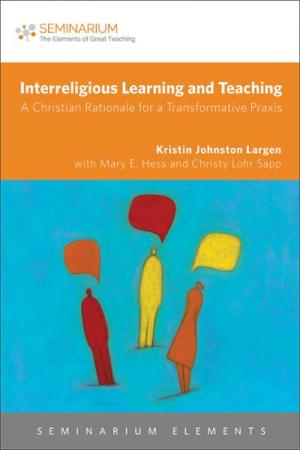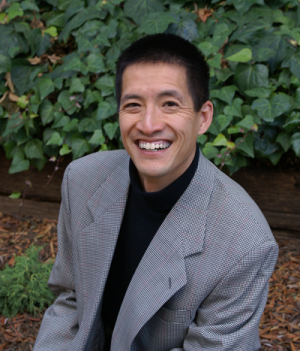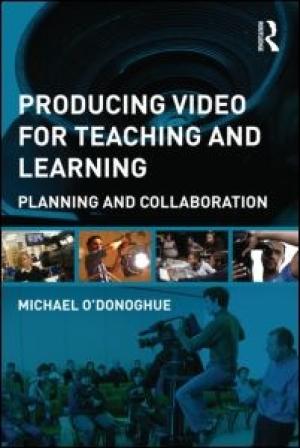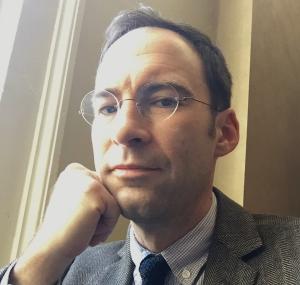Resources

Published in the Fortress Press series, “Seminarium: The Elements of Great Teaching,” this affordable, concise volume is targeted for Protestant seminary professors in particular but will also be of value to those working in Christian higher education and ministry, more generally. The teacher-friendly format features three chapters of text by K. Johnston Largen, punctuated by sequentially numbered, stand-alone text boxes of “Praxis Points” by C. Lohr Sapp, and responses to each chapter and an epilogue by M. E. Hess. The text offers many useful resource references including texts, websites, and video clips. Quick Response codes intersperse the text and the relevant URLs are also provided in footnotes. The first chapter presents four specific examples of interreligious experience relating to Hinduism, Islam, Buddhism, and Judaism, in order to demonstrate the urgent and practical importance of interreligious education and dialogue. The second chapter offers a theological rationale for such learning drawing upon insights of comparative theology. The third chapter suggests expected outcomes and pitfalls, strategies for including interreligious learning within a theological curriculum, and considerations for assessing transformative praxis for students, faculty, and institutions. The format highlights the richness of collaborative work that coheres well throughout the volume yet offers distinct contributions by each authorial voice, modeling the value of dialogue in its overall presentation. Theological references are primarily Lutheran and Roman Catholic but also model dialogue within Christian diversity. A further dialogue which informs all aspects of this text involves pedagogical scholarship, particularly literature associated with adult learners. Each author demonstrates pedagogical depth and writes in a personal, accessible, and occasionally humorous tone. Since the authors emphasize the importance of meeting students where they are and structuring learning opportunities with this in mind, a great deal of attention is paid to resistance and fears some Christian students continue to have toward learning about other religious ways and practices. Readers who are not actively involved in communities or educational settings that reflect this tension and ambivalence may be impatient with the introductory nature of the volume. The authors write to convince and inform those who are beginning or seeking to encourage others to begin this type of transformative praxis.

Martin Nguyen Associate Professor Fairfield University Teaching the Qur’an can be a formidable undertaking. Even though the Qur’an is an abiding research interest of mine, it makes teaching the scripture no less challenging. What do I choose to cover and how should I go about it in the course of

Tat-siong Benny Liew Class of 1956 Professor in New Testament Studies College of the Holy Cross After about six months and fifteen horrible haircuts in the San Francisco Bay area I finally found somebody who could give me a decent haircut, and I became a loyal customer for the

Theological school deans are not just theological leaders for their institution, they must be EDUCATIONAL leaders. That is, they must implement sound educational practices related to curriculum, instruction, supervision, assessment, and administration. While faculty members can focus on course-level and individual student learning assessment, academic deans need to implement program-level assessment in order to evaluate the effectiveness of the school's curricular course of study. There is a variety of ways to assess the effectiveness of the curriculum, and there are several levels of assessment (program-level, course-level, student testing, student projects, etc.).

Michael O’Donoghue writes that he has “attempted to create a work which [he] hope[s] is more of an educational thinking and production tool than a how-to-guide”(xi). The book does not quite achieve this particular goal because the author has, in fact, quite nicely done both. His paradigm for pedagogy’s interaction with video and his helpful sections on effective video creation gives the reader a philosophical as well as a practical grounding in the use of video in academic settings. O’Donoghue’s emphasis on teaching and learning ensures that every concept behind video production is linked in some way to a principle in teaching and learning. Making a pitch, or selling an idea for a video allows for review and reflection by teachers and students. Creating a framework for the film gives the educator an opportunity to clearly define learning objectives and outcomes. And a concern over the visual format of the film leads to a discussion on how teaching objectives are presented and received. While this may sound like a rather clumsy construction, O’Donoghue -- in part due to a clean and clear writing style -- pulls it off. As the educational justification is laid out for every aspect of multimedia production using video, readers begin to realize that something else is occurring. They are learning the technical aspects of video production and creation. While video production can seem intimidating, O’Donoghue walks the reader through the process from pitching and scripting to camera usage and post-production. His appendices add to the wealth of direction with an example of a pitch document, an illustrated storyboard, a production course structure, and a short section on lecture capture. But, by far, the best section in this book is the chapter of expert interviews. The author interviewed over twenty people on the use of educational video. He pared those down to the six who appear in chapter five, which is titled “Six of the Best.” And the title does not lie. Among the interviewees is are Sir David Attenborough, of natural history filmmaking renown, and Richard E. Mayer, one of America’s deans of academic multimedia usage. And there is a gem within this gem. The interviews are far ranging, illuminating, and different for each person. However, the final question is the same for them all: “Do you have suggestions for improving educational video productions?” Not only does the reader get very practical tips from these six but the author also gives the response to that question from all twenty-three persons interviewed. There is an embarrassment of riches here. The final chapter, concerning student production of a video, is interesting and practical but could have been longer. The further reading section and bibliography are also helpful and the index is surprisingly robust for such a short book. While the technology used in filming has changed in the last few decades many of the concepts of filming have not. Consequently, I see this philosophically and technically practical book being relevant and extremely useful for many years to come for educators in higher educational contexts.

Molly Bassett Associate Professor of Religious Studies Georgia State University A week into the spring semester, the fall term seems like it was forever ago! In my last post, I talked about the informal evaluations my students took, and since writing that post, I have thought about some of the.

Sophie Gilliat-Ray Director Centre for the Study of Islam in the UK Cardiff University The Muslim populations of most Western societies have grown over the last two decades as a result of immigration and conversion to Islam. This has drastically changed the landscape in which teaching and learning about Islam.

Nancy Lynne Westfield Associate Professor of Religious Education Drew Theological School Teaching for racial equality, and against oppression, has meant coming to grips with what my adult students (domestic and international) do not know, i.e. the basic concepts of race and the mechanisms of racism in the United States. Teaching

Nancy Lynne Westfield Associate Professor of Religious Education Drew Theological School We teach with aspirational dreams for our students. The right-now challenge of student formation is that we have never seen our world just-so. We are intellectual, faith pioneers in the malaise and luxury of the 21st century. This digita

Caleb Elfenbein Assistant Professor Grinnell College It is probably safe to say that most of our students have not known a world without the war on terror—perhaps more appropriately called the war of terror, for the call and response of violence from September 2001 onward has left at least one.